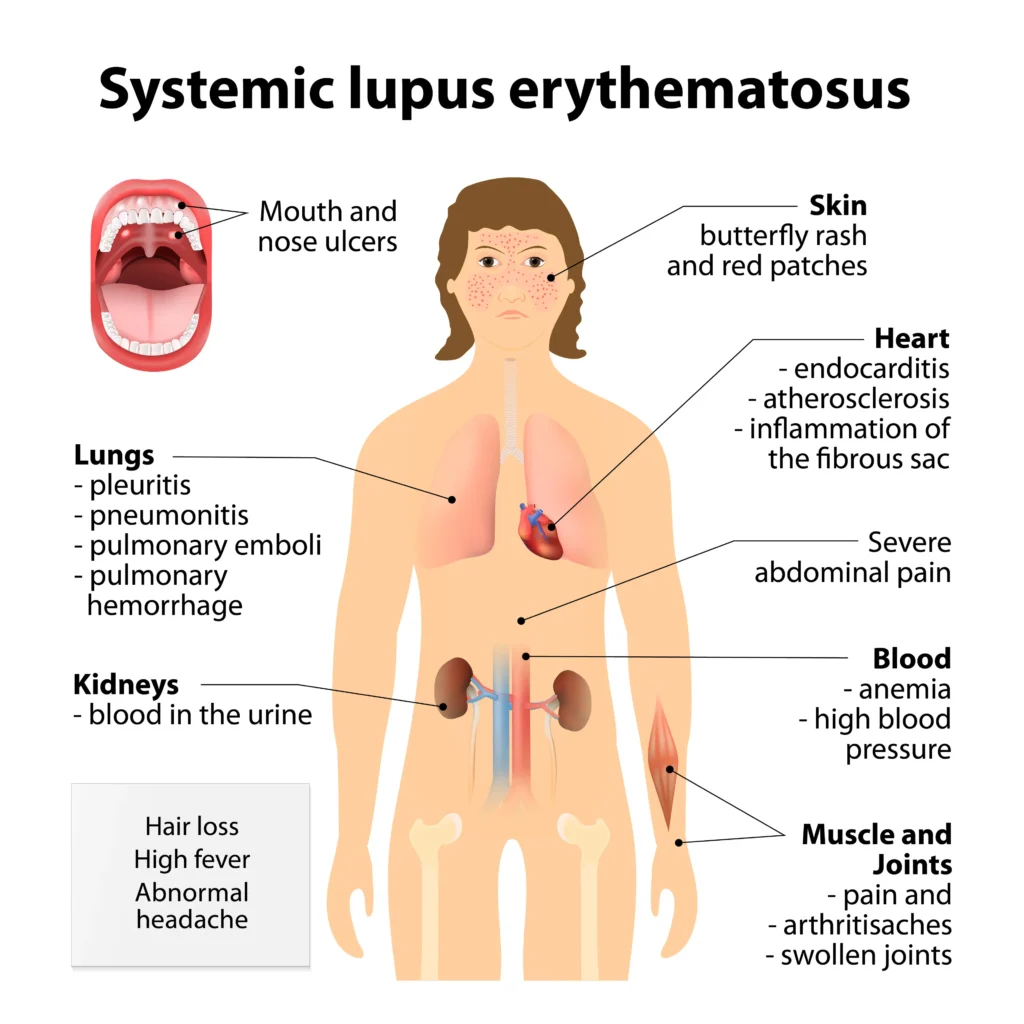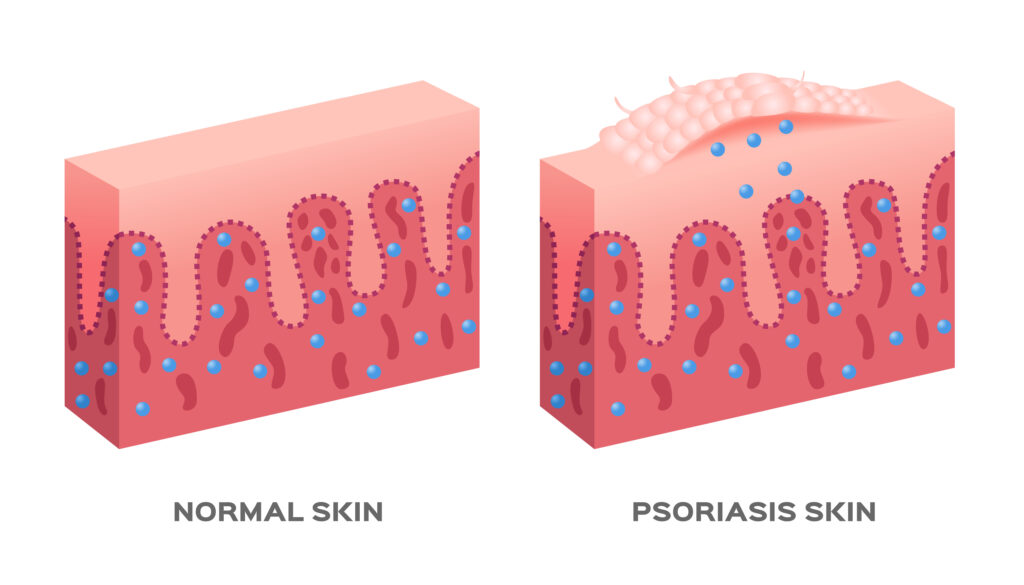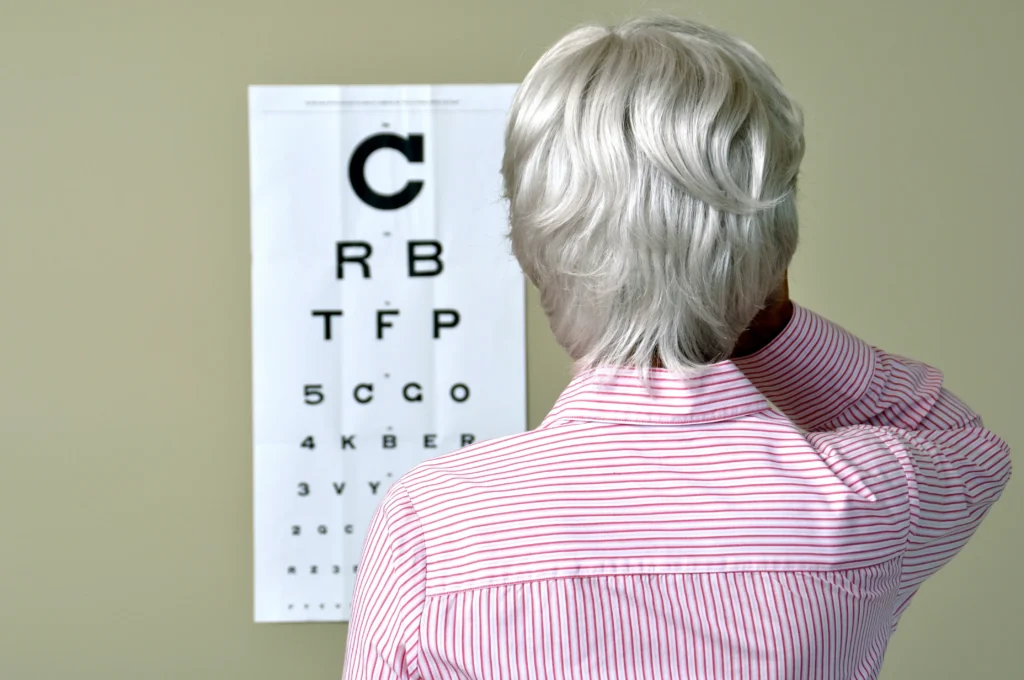Of the many diseases that afflict the human body, some are easily treated, others are difficult, and for some, medicine has yet to discover a definitive cure.
Therefore, it is crucial to be aware of the diseases that have long puzzled medical science and to adopt established preventive measures. This is often the only course of action if one of these conditions develops. It is important to note, however, that palliative treatments exist for these health conditions. Their goal is to alleviate symptoms, slow disease progression, and improve the patient’s quality of life.
——– Ad ——–
——– Ad ——–
Incurable Diseases
This article reviews diseases for which medicine has not yet found a cure that can completely eradicate them or return the patient to their pre-illness state of health. These diseases are categorized as follows:
1. Neurodegenerative Diseases
Neurodegenerative diseases affect millions of individuals worldwide. They occur when nerve cells in the brain or peripheral nervous system lose function over time and ultimately die. These diseases include the following:
● Dementia
Dementia is a broad medical term for a group of disorders characterized by memory loss and the impairment of cognitive abilities such as concentration, reasoning, and problem-solving, which interfere with daily life. Alzheimer’s disease is the most common type of dementia, along with other types like vascular dementia, frontotemporal dementia, Lewy body dementia, and mixed dementia.
According to the World Health Organization (WHO), the most significant risk factors for dementia are:
- Advancing age, especially 65 and over
- High blood pressure (hypertension)
- Diabetes
- Obesity
- Excessive alcohol consumption
- Smoking
Statistics indicate there were an estimated 55 million cases of dementia in 2020. This number is projected to nearly double every 20 years, reaching 78 million by 2030 and approximately 139 million by 2050, with the increase concentrated in low- and middle-income countries.
● Parkinson’s Disease
Also known as paralysis agitans, Parkinson’s is another neurodegenerative disease. Its most recognized symptom is a tremor in parts of the body. Other symptoms include muscle rigidity, slowness of movement (bradykinesia), and impaired balance and posture.
Parkinson’s disease arises from the damage of nerve cells in a specific area of the brain known as the substantia nigra. This leads to a deficiency in the brain chemical dopamine. The motor symptoms of Parkinson’s are largely attributed to this decrease in dopamine levels.
The exact cause of nerve cell loss in the substantia nigra remains unknown. However, most experts believe that Parkinson’s results from a combination of genetic and environmental factors, such as exposure to toxins and pesticides. The disease affects men more than women, with over 90% of registered cases occurring in individuals over the age of sixty.
● Motor Neurone Diseases (MND)
MNDs are a group of incurable diseases that affect the nerves known as motor neurons, located in the brain and spinal cord, which transmit signals to the muscles to control movement. Patients experience muscle weakness and stiffness, leading to difficulties with walking, speaking, eating, drinking, and breathing. The severity and number of symptoms vary among patients.
Though they share some characteristics, motor neurone diseases are divided into the following forms:
• Lateral Sclerosis (ALS)
The most common form of MND, characterized by muscle stiffness and weakness primarily in the limbs. Initial symptoms often include tripping and dropping things. After the onset of the first symptoms, life expectancy is typically between two and five years, though some cases may live longer depending on individual factors.
• Primary Lateral Sclerosis (PLS)
A rare type of MND. Its signs include weakness and stiffness that usually begin in the lower limbs, accompanied by speech problems and other symptoms. This type progresses slowly, giving the patient a longer life expectancy.
• Progressive Bulbar Palsy (PBP)
This type specifically affects the muscles of the face, throat, and tongue. Prominent symptoms include difficulty swallowing and slurred speech. The average life expectancy ranges from 6 months to 3 years from the onset of symptoms.
• Progressive Muscular Atrophy (PMA)
An uncommon type of MND that affects a small number of people, causing weakness or clumsiness in the hands. Patients with this type often live for more than 5 years.
Motor neurone diseases can affect both children and adults of all ages. However, individuals over 50 are more prone to these neurological problems. While research into the causes is limited, available evidence suggests that genetic factors play the most significant role. Nonetheless, researchers suspect a link to environmental and lifestyle factors, including:
- Exposure to physical or electrical trauma
- Excessive physical activity
- Military service
- Handling of agricultural chemicals like pesticides and synthetic fertilizers
- Exposure to heavy metals such as mercury and lead
● Prion Disease
A prion is a type of protein that can influence normal proteins in the brain, causing them to misfold abnormally. This abnormal folding leads to severe disturbances in brain function.
Prion diseases comprise a series of infectious or hereditary diseases that affect both humans and animals. They are considered rare and are universally fatal. With no definitive cure available, a person with a prion disease may survive for a period ranging from a few months to several years after the first symptoms appear.
- Key symptoms of prion diseases include:
- Muscle stiffness and twitching
- Difficulty walking and poor coordination
- Rapidly progressive dementia
- Hallucinations and confusion
- Difficulty speaking
- Fatigue
The causes of prion diseases include:
- A family history of prion disease.
- Consumption of meat from animals infected with bovine spongiform encephalopathy (mad cow disease).
- Exposure to contaminated medical equipment.
——– Ad ——–
——– Ad ——–
2. Autoimmune Diseases
These are conditions in which your immune system mistakenly attacks your body’s healthy cells, tissues, and organs, instead of its primary role of fighting germs.
Autoimmune diseases result from a malfunction of the immune system, which scientists believe is primarily caused by genetics. Environmental conditions, including chemicals and viruses, may also contribute. Furthermore, women have a higher chance of developing autoimmune diseases than men, and having one autoimmune disease increases the likelihood of developing another.
Over 80 types of autoimmune diseases have been discovered. The most common include:
● Type 1 Diabetes
The immune system attacks and destroys the beta cells in the pancreas, which are responsible for producing the hormone insulin. This causes a rise in blood glucose (sugar) levels, leading to Type 1 Diabetes.
The main symptoms include:
- Feeling very thirsty and urinating more than usual.
- Extreme fatigue.
- Rapid weight loss.
- Blurred vision.
- Slow-healing sores.
Serious complications can include heart disease, nerve damage, severe vision problems, and kidney disorders.
● Multiple Sclerosis (MS)
MS is an autoimmune neurological disorder affecting the brain and spinal cord. It develops when the immune system attacks myelin, a fatty substance that forms a protective sheath around nerve fibers. Myelin gives the white matter of the brain its characteristic color and facilitates communication between nerve cells.
Damage to myelin disrupts the signals sent by your nerves throughout your body, thereby impairing vital functions like movement, vision, and sensation.
A person with MS may experience a range of symptoms, including:
- Visual problems, such as blurred vision and eye pain.
- Numbness or tingling in various parts of the body.
- Dizziness and lack of coordination.
- Difficulties with concentration and memory.
- Sexual problems, such as vaginal dryness and erectile dysfunction.
- Muscle spasms and stiffness.
- Frequent urge to urinate or loss of bladder control.
While the exact reason the immune system attacks the nerves is unclear, experts believe the following risk factors are involved:
- Age between 20 and 50 years.
- Women are more susceptible than men.
- The disease is more common among Caucasians.
- A first-degree relative (parent, sibling) with the disease.
- Smoking doubles the risk of developing MS.
- Prior infection with the Epstein-Barr virus (EBV), especially during adolescence or adulthood.
Conversely, studies suggest that sun exposure may reduce the risk of MS, as individuals with higher levels of vitamin D have immune systems that are better regulated, which helps limit the risk of MS and autoimmune diseases in general.
● Lupus
Another long-term autoimmune disease that affects multiple parts of the human body. It is characterized by widespread inflammation affecting the skin, joints, lungs, kidneys, brain, and blood cells, with the severity and location of symptoms varying among individuals.
Medical science has identified several factors contributing to the onset of lupus:
- Increased risk if a close family member has it.
- Prolonged exposure to ultraviolet (UV) rays.
- Severe stress.
- Certain medications and antibiotics from the penicillin and sulfa groups.

● Psoriasis
In this condition, the immune system attacks healthy skin cells, particularly on the scalp, knees, and elbows, by accelerating skin cell production. This causes a rapid buildup of skin cells on the surface of the affected area, leading to red patches covered with silvery or white scales.
There are many types of psoriasis, such as plaque, guttate, pustular, inverse, and erythrodermic psoriasis, as well as nail psoriasis. Despite their variety, they share common symptoms:
- Thick, red skin patches covered with white or silvery scales that are itchy and may burn.
- Dry, cracked skin.
- Thickened, pitted, or ridged nails.
- Poor sleep quality.
To avoid the symptoms of psoriasis, be mindful of the following risk factors that increase your chances of developing the disease:
- Smoking in all its forms.
- Obesity.
- Skin injuries such as scratches, cuts, sunburns, and insect bites.
- Use of certain medications for heart disease, malaria, or mental health conditions.
- Infections, especially staphylococcal and human immunodeficiency virus (HIV) infections.
This condition is classified as non-contagious and cannot be transmitted from an infected person to a healthy one.

● Rheumatoid Arthritis
A chronic disease that primarily affects the joints, causing pain, swelling, and stiffness. This condition particularly affects the joints of the hands, wrists, and feet. It occurs when the immune system attacks the healthy tissues of the joints.
Rheumatoid arthritis presents with several symptoms, such as:
- Aches and pains
- Stiffness
- Swelling, warmth, and redness
- Fatigue and low energy
- Sweating
- Loss of appetite
- Weight loss
- Dry eyes
- Chest pain
Complications include carpal tunnel syndrome, inflammation in other areas of the body like the lungs, heart, and blood vessels, joint damage, and an increased risk of heart attack or stroke.
Besides genetic factors, certain environmental factors increase the risk of the disease. Smoking, for example, can significantly raise your risk. Hormonal changes are another factor, as women are more susceptible to the disease due to the effects of estrogen.
● Vitiligo
This disease occurs when the immune system attacks the skin cells that produce melanin, the pigment responsible for skin color. This results in the loss of color in patches of skin, creating a contrast in skin tone.
In addition to changes in skin color, other symptoms of vitiligo include itching and the hair in affected areas turning white or gray.
Certain factors may increase the risk of developing vitiligo:
- A family history of vitiligo or other autoimmune diseases.
- Personally having another autoimmune disease.
- Suffering from certain types of cancer, such as skin cancer or lymphoma.
- Experiencing severe stress, such as childbirth.
- Cuts and sunburns.
- Exposure to specific chemicals.
It is worth noting that vitiligo is a non-contagious disease and cannot be transmitted from one person to another.
——– Ad ——–
——– Ad ——–
3. Non-Communicable Diseases (NCDs)
These are non-infectious diseases that do not spread from person to person. Also known as chronic diseases, they often persist for long periods, and some lack curative treatments. These diseases arise from a combination of genetic, physiological, environmental, and behavioral factors.
Incurable non-communicable diseases include:
● Hypertension (High Blood Pressure)
A health condition where the force of the blood against the artery walls is consistently too high. This condition can lead to numerous complications, including heart attack, stroke, heart failure, kidney problems, and more.
Hypertension is typically caused by an unhealthy lifestyle, such as smoking, alcohol consumption, lack of regular exercise, and a diet high in sodium (salt). Obesity and diabetes also increase the risk.
Prevention methods involve avoiding the aforementioned causes, along with managing blood sugar and cholesterol levels, and consuming heart-healthy foods rich in potassium. Additionally, getting enough sleep, managing stress effectively, and avoiding weight gain are crucial.
● Asthma
A chronic disease affecting the respiratory system and the airways in the lungs. Asthma leads to inflammation and narrowing of these passages, making it difficult for air to flow out during exhalation.
Clear signs that may appear in a person with asthma include:
- Shortness of breath.
- A whistling or wheezing sound during breathing.
- A feeling of tightness in the chest.
- Coughing, especially at night or in the early morning.
Complications of asthma include anxiety and depression, lung infections, persistent fatigue, and life-threatening severe asthma attacks.
There is no clear cause for asthma, but suggested factors believed to be linked to its development are:
- Genetics and a family history of asthma.
- A personal history of atopic conditions like hay fever, eczema, or food allergies.
- Having bronchitis during childhood.
- Inhaling tobacco smoke during childhood.
- Working in occupations that expose you to harmful substances like chemicals and toxic fumes.
● Chronic Obstructive Pulmonary Disease (COPD)
A group of lung diseases that cause a progressive decline in lung function. It is the fourth leading cause of death worldwide. In 2021, the disease resulted in 3.5 million deaths, accounting for 5% of global fatalities.
Symptoms of the disease include difficulty breathing, chronic cough, and fatigue. Possible complications include lung cancer, heart problems, and pneumonia.
Smoking is the biggest risk factor for COPD, and this includes secondhand smoke. Other risk factors include exposure to environmental pollutants in the workplace and other locations.
To reduce the risk of the disease, quit smoking and avoid inhaling tobacco smoke, and try to be in places with clean air.
4. Other Diseases
Besides neurodegenerative, autoimmune, and non-communicable diseases, there are other conditions for which no definitive cure has yet been found. The most important of these are:
● Pulmonary Fibrosis
A long-term disease affecting the lungs, causing damage to the tissue around the air sacs (alveoli). This leads to scarring and thickening of the lungs. As a result, breathing becomes more difficult, and the blood’s oxygen supply decreases.
Pulmonary fibrosis is associated with indicators that suggest you may have it, including:
- Shortness of breath
- A persistent, dry cough
- Fatigue
- Weight loss
- Loss of appetite
- A bluish tint to the lips and tongue
- Widening and rounding of the tips of the fingers or toes (clubbing)
- Aching joints and muscles
Common causes of pulmonary fibrosis include:
- Side effects of some medications such as antibiotics, immunosuppressants, and cancer chemotherapy.
- Previous radiation therapy.
- Inhaling chemicals and harmful dust, such as wood dust.
- Having an autoimmune disease like rheumatoid arthritis.
- Viral or bacterial infections.
- Smoking or secondhand smoke.
● Rabies
A highly dangerous viral disease that affects the central nervous system of both humans and animals. Dogs are the main culprits in transmitting the virus to humans in about 99% of human cases.
As is well known, rabies is transmitted to humans through the saliva of infected animals, usually via a bite or when open wounds come into contact with the saliva. The infection can also be transmitted by touching the eyes or mouth with a hand contaminated with the virus-laden saliva.
Rabies is widespread in most parts of the world, especially in Asia and Africa, and claims tens of thousands of lives each year, 40% of whom are children under 15.
Symptoms include fever, pain, and unusual tingling, pricking, or burning sensations at the wound site. As the virus progresses to the central nervous system, it causes progressive and fatal inflammation of the brain and spinal cord.
Rabies is fatal in almost all cases once symptoms appear; however, it is preventable with proven vaccines administered before symptom onset. Other preventive measures include avoiding contact with wild and stray animals, especially dogs, particularly if they exhibit suspicious signs like aggression or extreme lethargy, and educating children about these risks.
● AIDS (Acquired Immunodeficiency Syndrome)
A disease that occurs when the body contracts the Human Immunodeficiency Virus (HIV), a virus that attacks white blood cells and weakens the immune system. This leads to the development of Acquired Immunodeficiency Syndrome (AIDS).
The signs of HIV infection can manifest as:
- Flu-like symptoms that last for several days or weeks.
- Swollen lymph glands.
- Sores in the mouth, esophagus, or genital area.
- Night sweats.
- A non-itchy skin rash.
HIV is spread among people through several channels, including vaginal or anal intercourse, or sharing needles. The virus is transmitted through specific body fluids, such as blood, semen, vaginal fluids, rectal fluids, and breast milk.
Smoking, alcohol, and drugs top the list of risk factors that increase your chance of contracting HIV.
To prevent AIDS, use a condom during sex to protect yourself and your partner from HIV transmission. At the same time, be sure not to share needles or syringes with others. It is also imperative to quit smoking tobacco and similar substances, and to abstain from alcohol and illicit drugs.
To clarify the nature of the virus, it should be known that HIV is not transmitted through touch, such as shaking hands or hugging, sharing food, or being near an infected person. It is perfectly safe to socialize with someone who is living with HIV.
Conclusion
After this review of several diseases for which no definitive cure has been found to date, it is important to remember that the absence of a complete and decisive treatment does not necessarily mean a premature end. The quality of life for patients can be improved, and accompanying symptoms can be alleviated. Furthermore, we must not forget that the field of scientific research is constantly and rapidly advancing, and the door remains open for new and advanced therapeutic discoveries in the future.
○ Share the article:
References
(1) Dementia statistics, Alzheimer’s Disease International, Retrieved on 29 September
(2) What is MND? MND Association, Retrieved on 29 September
(3) Autoimmune Diseases, National Institute of Environmental Health Sciences, Retrieved on 29 September
(4) Psoriasis, National Institutes of Health, Retrieved on 29 September
(5) Noncommunicable diseases (2024), WHO, Retrieved on 29 September
(6) Pulmonary Fibrosis, Cleveland Clinic, Retrieved on 29 September


